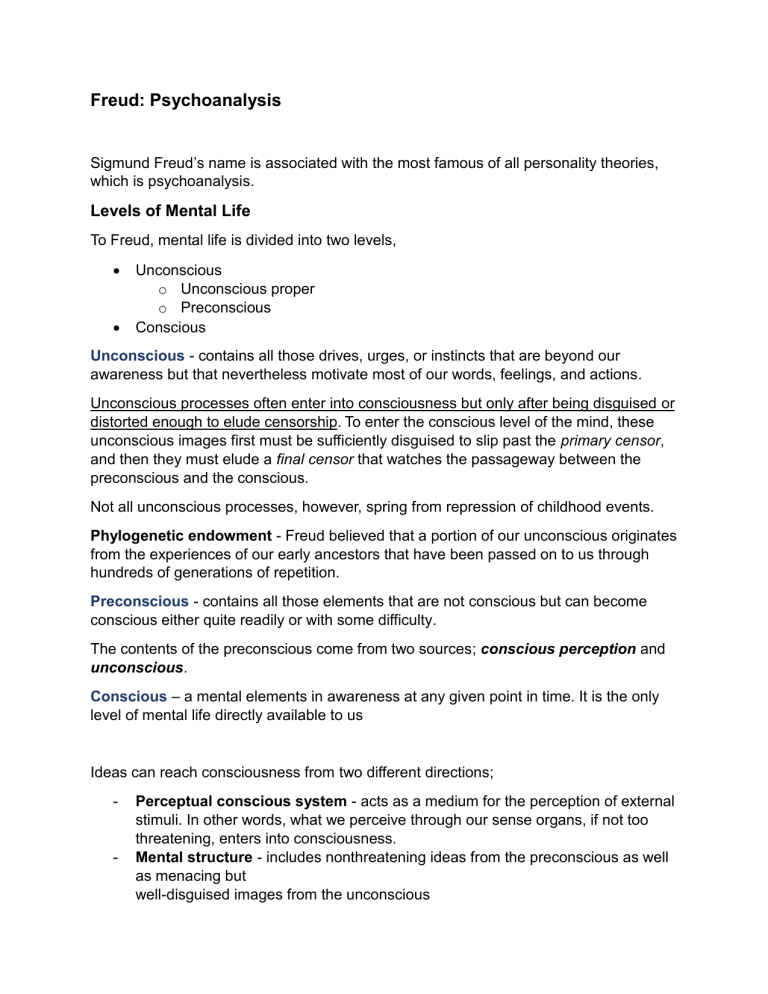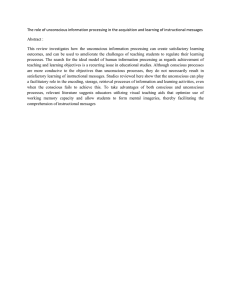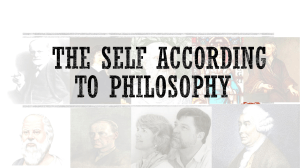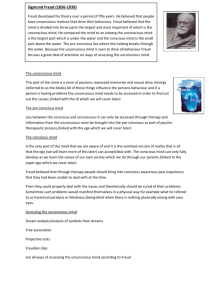
Freud: Psychoanalysis Sigmund Freud’s name is associated with the most famous of all personality theories, which is psychoanalysis. Levels of Mental Life To Freud, mental life is divided into two levels, Unconscious o Unconscious proper o Preconscious Conscious Unconscious - contains all those drives, urges, or instincts that are beyond our awareness but that nevertheless motivate most of our words, feelings, and actions. Unconscious processes often enter into consciousness but only after being disguised or distorted enough to elude censorship. To enter the conscious level of the mind, these unconscious images first must be sufficiently disguised to slip past the primary censor, and then they must elude a final censor that watches the passageway between the preconscious and the conscious. Not all unconscious processes, however, spring from repression of childhood events. Phylogenetic endowment - Freud believed that a portion of our unconscious originates from the experiences of our early ancestors that have been passed on to us through hundreds of generations of repetition. Preconscious - contains all those elements that are not conscious but can become conscious either quite readily or with some difficulty. The contents of the preconscious come from two sources; conscious perception and unconscious. Conscious – a mental elements in awareness at any given point in time. It is the only level of mental life directly available to us Ideas can reach consciousness from two different directions; - - Perceptual conscious system - acts as a medium for the perception of external stimuli. In other words, what we perceive through our sense organs, if not too threatening, enters into consciousness. Mental structure - includes nonthreatening ideas from the preconscious as well as menacing but well-disguised images from the unconscious



